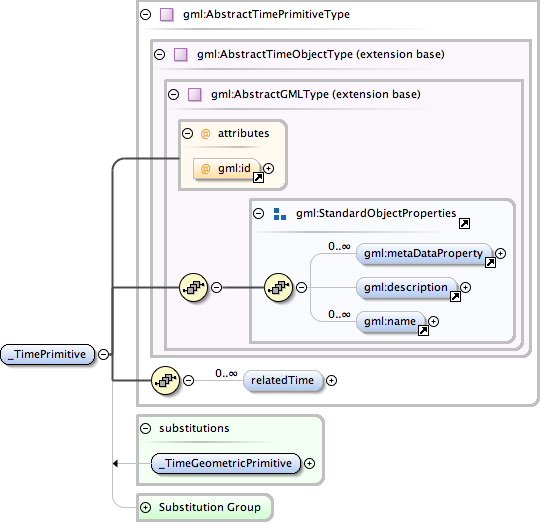| Namespace | http://www.opengis.net/gml | ||||||||||||
|
Annotations
|
This abstract element acts as the head of the substitution group for temporal primitives.
|
||||||||||||
|
Diagram
|
 |
||||||||||||
| Type | gml:AbstractTimePrimitiveType | ||||||||||||
| Type hierarchy | |||||||||||||
|
Properties
|
|
||||||||||||
|
Used by
|
|
||||||||||||
| Model | gml:metaDataProperty* , gml:description{0,1} , gml:name* , gml:relatedTime* | ||||||||||||
| Children | gml:description, gml:metaDataProperty, gml:name, gml:relatedTime | ||||||||||||
|
Instance
|
|
||||||||||||
|
Attributes
|
|
||||||||||||
|
Source
|
|
||||||||||||
| Schema location | http://schemas.opengis.net/gml/3.1.1/base/temporal.xsd |